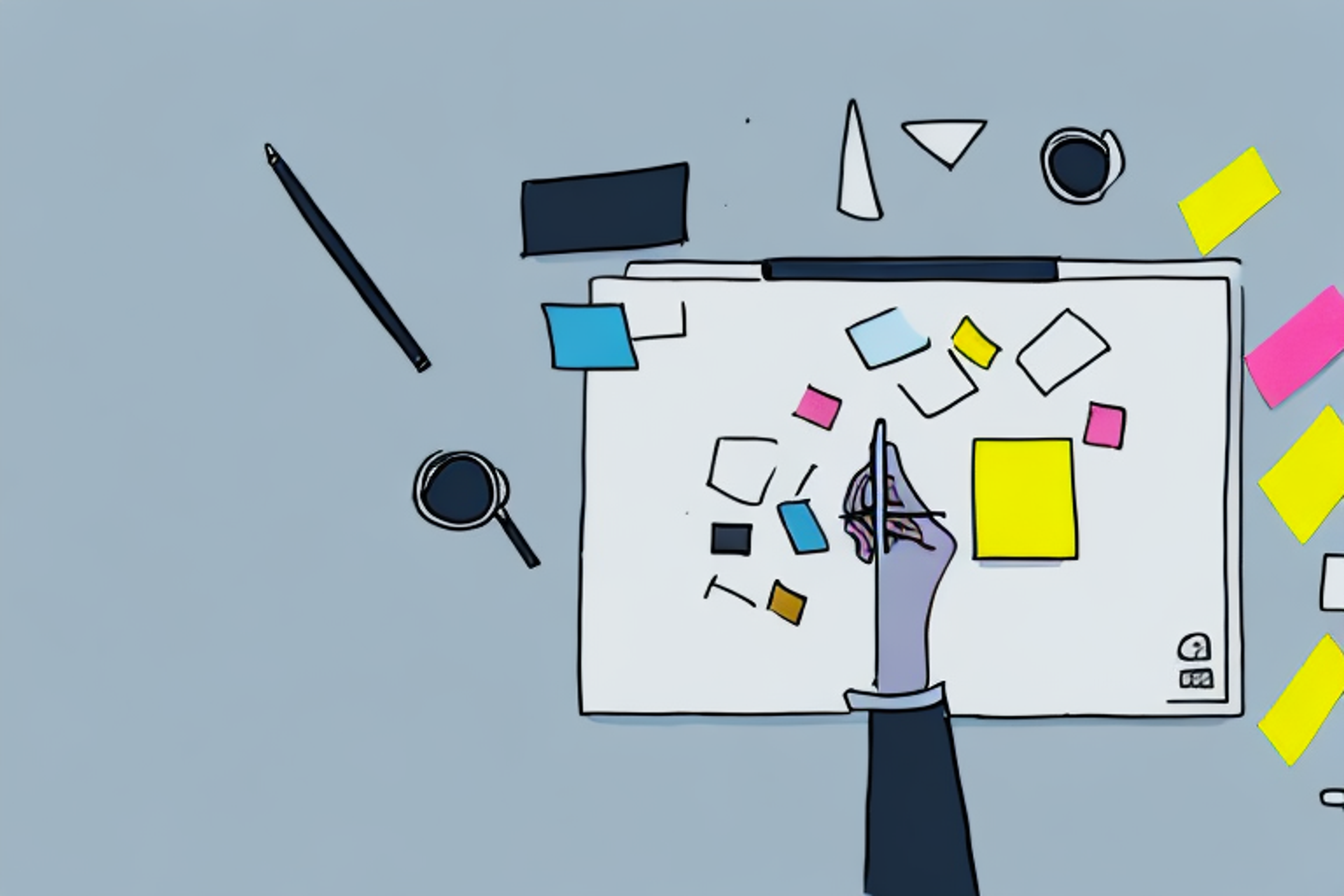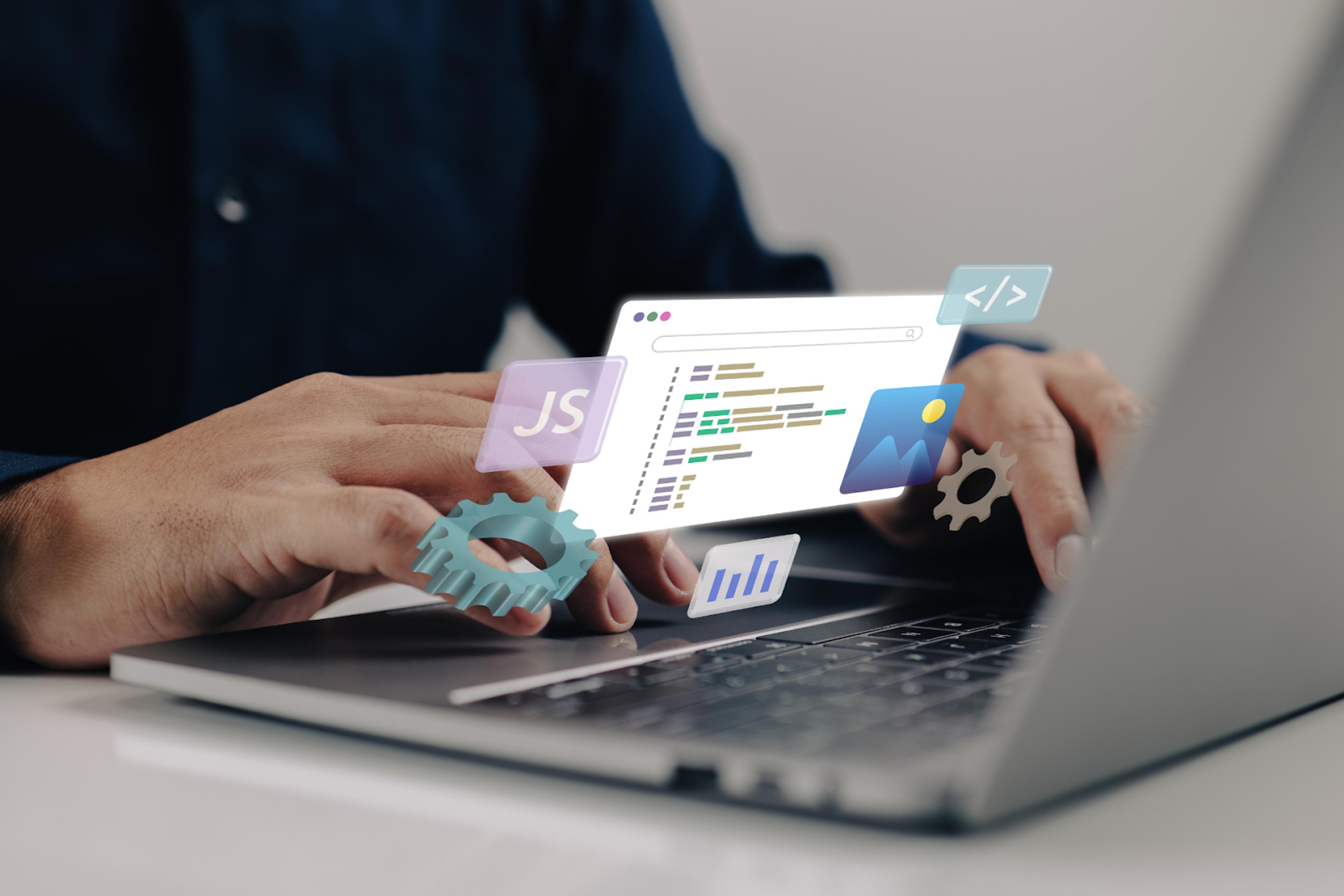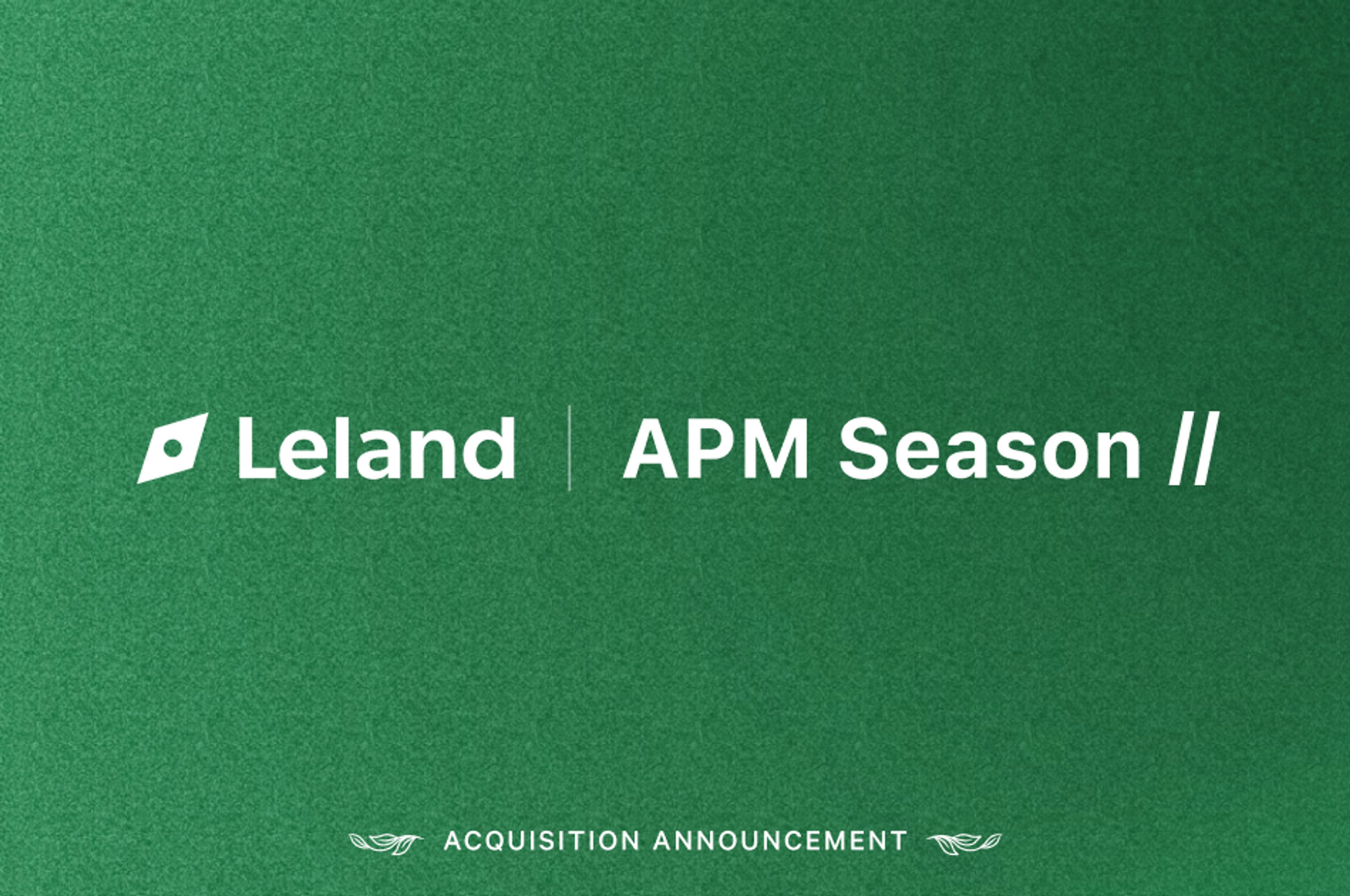How to Nail Your Product Sense Interview
Master your product sense interview with our expert tips. Learn how to showcase creativity, market insight, and product thinking to land your dream role.
Posted June 13, 2025

Table of Contents
Are you gearing up for a product sense interview? You're in the right place! This crucial component of the product management hiring process has a significant impact on your chances of landing that dream job. Product sense interviews assess your ability to think critically about products, understand user needs, and devise innovative solutions.
In this guide, we'll walk you through everything you need to know to ace your product sense interview. You'll learn what product sense is, common questions to expect, and effective frameworks to structure your responses. We'll also share tips to help you prepare, highlight mistakes to avoid, and give you insights into what companies like Microsoft and Meta look for in these interviews. By the end of this article, you'll be well-equipped to showcase your product skills and make a lasting impression on your interviewers.
What is Product Sense?
Product sense is the innate ability to understand what makes a product great and how it can meet the market's needs. What does that actually mean? It means understanding what makes a product valuable and how it can help people or solve a problem in the real world. It’s about knowing what users need and how the product can fit into the market to meet those needs effectively.
Product sense is a combination of skills that sets top product managers (PMs) apart from the rest. At its core, product sense involves a deep understanding of users, the competitive landscape, and the ability to innovate within constraints.
The Role of Product Sense Interviews
In product sense interviews, candidates are evaluated on their ability to balance user-centric design with viable business strategies. These interviews are crucial as they assess a candidate's skill in:
- Identifying user needs and translating them into compelling product features
- Situating a product within a broader business context
- Considering market trends, competition, and monetization strategies
The ultimate goal of these interviews is to gauge your capability to drive a product's success by aligning user satisfaction with business objectives. Interviewers are looking for your ability to make the right decisions, even when things are unclear.
To enhance your product sense for interviews, focus on:
- Interacting with diverse users and partners to build empathy
- Understanding the reasons behind user responses, not just acquiring information
- Deepening your knowledge of psychology, including cognitive biases and behavioral economics
- Growing your domain knowledge and boosting your creativity
By developing these skills, you'll be better equipped to showcase your product sense in interviews and stand out as a top product manager candidate.
Most Common Product Sense Interview Questions
Product sense interviews typically involve case study exercises that assess your ability to evaluate products, identify product improvement opportunities, and reason about tradeoffs. To help you prepare, here are 20 example questions you might encounter in this PM interview:
- How would you improve our product?
- Tell me about a product you love. What do you like about it, and how would you improve it? (this is the famous “favorite product” question)
- How would you design a product for [specific user group, e.g., children, elderly, etc.]? (Example: How would you design an alarm clock for a college student?)
- What’s your favorite product and why?
- How would you prioritize features based on data for a product?
- What new feature would you add to [specific product] and why? (Example: What new feature would you add to your local gym’s fitness app?)
- How would you redesign [a well-known product, e.g., Facebook, Uber, etc.]?
- How would you approach designing a feature for [specific scenario, e.g., remote workers, travelers, etc.]?
- Describe a product that you think is poorly designed. How would you improve it?
- If you were the PM for [product], what would be your next step to grow it?
- How would you decide whether to launch a product in a new market?
- How would you improve user retention for our product? What criteria would you use to segment users?
- What metrics would you track for a new product launch?
- How would you identify and solve a challenge for our users?
- What’s the biggest problem our product is facing, and how would you address it?
- How would you improve the onboarding experience for a new user?
- Describe a time you had to make a trade-off between two product features.
- How would you improve the user experience for [specific product, app, or feature]?
- How would you launch a new feature on a tight deadline?
- What’s a recent trend in technology or design that you think will shape the future of products?
These example questions cover various aspects of product management including user experience, market research, metrics, feature prioritization, decision-making, industry knowledge, stakeholder management, pricing, and product launches.
When answering these questions, remember to focus on user needs, conduct thorough research, and consider both impact and feasibility.
Example Answers to Product Sense Interview Questions
1. How would you improve our product?
"As a frequent user of your product, I’ve noticed that while the core features are highly functional, the onboarding experience for new users could be improved. Specifically, it currently takes 5-7 steps to set up an account, which may contribute to drop-off rates during registration. I would recommend simplifying the onboarding process by offering a one-click sign-up using social media integration or autofill capabilities. Additionally, incorporating a more interactive onboarding experience, such as a step-by-step guide with tooltips, could help users understand the new features more intuitively. During my internship at a fintech startup, I led a project to redesign the onboarding flow, reducing steps by 40%, which resulted in a 15% increase in user retention. I believe a similar approach could have a positive impact here."
2. Tell me about a time when you prioritized one feature over another. How did you decide?
"During my internship at a fintech company, we were working on both a budgeting tool and a notifications feature for our app. After conducting user research, we found that while both were important, users consistently expressed frustration over missing bill deadlines and wanted real-time notifications more urgently. I worked with our product and engineering teams to prioritize the notifications feature, using data to show that it would improve user engagement and reduce churn. We launched the notifications feature within three months, and it led to a 25% increase in daily active users. The budgeting tool was added in the next cycle, but our decision to prioritize notifications first was driven by the direct impact it would have on user satisfaction and retention."
3. Describe a product you love. What do you like about it, and how would you improve it?
"One product I really admire is Spotify. Its personalized playlists and discovery features like 'Discover Weekly' are brilliant in terms of user engagement, and I love how it combines both data-driven and user-driven approaches to recommend music. However, one area I think could be improved is the social aspect of the platform. While it allows users to follow friends and see their playlists, I think there’s an opportunity to deepen that connection. I’d suggest introducing more social listening features, like live sessions where users can listen to music together or collaboratively build playlists in real-time. This could enhance community interaction on the platform and drive further engagement. During a side project, I worked on a social feature for a mobile game, where we allowed users to form teams and share progress in real-time. It boosted retention by 18%, so I think Spotify could see similar results with deeper social functionality."
4. How would you decide whether to launch a product in a new market?
"Launching a product in a new market requires a comprehensive analysis of both the opportunity and potential risks. First, I would conduct market research to understand the demand, competitive landscape, and cultural nuances of the new market. I’d look at factors like market size, growth potential, customer pain points, and local competitors. I would also evaluate our internal capacity, ensuring the product can be adapted for the new market in terms of language, legal requirements, and user preferences. A good example comes from my internship at a startup where we considered launching a payments feature in a new country. We used a combination of surveys, competitive analysis, and a small pilot test to validate the demand before proceeding. This research led us to prioritize another region where we had stronger customer interest, saving us resources and time while positioning the company for greater success."
5. How do you approach designing a product for users who are not like you?
Designing for users who are not like me requires empathy, user research, and constant feedback. I start by identifying the core needs and pain points of the target user group through user interviews, surveys, and analyzing existing product data. It’s important to step out of my own perspective and make data-driven decisions rather than assumptions. For example, when I worked on a side project to design a healthcare app for elderly users, I wasn’t familiar with their specific challenges. So, I conducted interviews with people in that demographic to understand their needs—like larger text, fewer steps, and voice assistance options. We also did usability testing with older adults to ensure the app was intuitive. By relying on real user data and feedback, we created a product that was highly accessible and easy to use for the intended target audience.
Companies With Product Sense Interviews
PM interviews are a crucial part of the hiring process for many top tech companies. The product sense step, specifically, assesses your ability to evaluate products, identify improvement opportunities, reason about tradeoffs, and other product strategy skills. Let's explore some notable companies known for their distinct product sense interview rounds.
- Meta/Facebook: Meta is credited with the first product sense interview. Their approach has significantly influenced the rest of the industry, setting a standard that many other companies now follow. The criteria developed for the Meta product sense interview has spread widely, shaping how product managers are evaluated across the tech sector.
- Microsoft: Microsoft is another tech giant that places a high value on product sense in their PM interviews. Their interview process typically includes case study exercises that test candidates' ability to think critically about products and user needs.
- Stripe: Stripe, a leading financial technology company, has a comprehensive PM interview process that includes a strong focus on product sense. Their interviews often involve in-depth discussions about product strategy and improvement opportunities.
- Lyft: Lyft, the ride-sharing company, also incorporates product sense questions into their PM interviews. They look for candidates who can demonstrate strong user empathy and the ability to make data-driven decisions.
Other Notable Companies
Companies like Affirm and Apollo have also adopted similar product sense interview approaches. This trend underscores the importance of developing strong product sense skills if you're aiming for a product management role in the tech industry.
Effective Frameworks for Product Sense Questions
When preparing for these questions, using frameworks can help you structure your thoughts and provide comprehensive answers. Here are three effective frameworks to consider:
CIRCLES Method
The CIRCLES method, developed by Lewis C. Lin, is a structured approach to product design questions. This framework helps you think critically about new or potential products, focusing on target users, their needs, and how the product satisfies those needs. The acronym stands for:
- Comprehend the situation
- Identify the customer
- Report the customer's needs
- Cut through prioritization
- List solutions
- Evaluate tradeoffs
- Summarize your recommendations
This method ensures you don't jump straight to possible solutions before fully understanding the problem. It allows you to showcase your ability to articulate a product vision, prioritize use cases, and overcome limited resources.
STAR Method
The STAR method is particularly useful for behavioral and situational interview questions. It provides a simple framework to shape your answer into a meaningful story. STAR stands for:
- Situation: Describe the context
- Task: Explain your responsibilities
- Action: Detail the steps you took
- Result: Share the outcome
This method helps you provide clear, concise responses that demonstrate your skills and experience. It's especially effective for questions about teamwork, problem-solving, leadership, and handling pressure.
BUS Framework
The BUS framework is a three-step approach to the product process :
- Business objectives
- User problems
- Solutions
This framework forces you to approach problems in a logical order, establishing business objectives and identifying relevant user problems before considering solutions. It's particularly useful for product design, improvement, and strategy questions.
What to Do (and Not Do)
To Do:
- Embrace the open-ended nature: Remember, there's no single correct answer in product sense interviews. Instead of agonizing over the perfect solution, choose a direction and dive in. Communicate your thought process clearly, as experienced interviewers value your reasoning more than the specific idea you present.
- Focus on evaluation skills: While creativity is important, your ability to assess ideas critically is even more crucial. You're expected to generate obvious solutions and, more importantly, evaluate them effectively. Showcase your analytical skills by thoroughly examining each potential solution.
- Be flexible with frameworks: Avoid relying on a one-size-fits-all approach. Adapt your strategy based on the specific question at hand. Remember, jumping straight to solutions is a common pitfall. Instead, take time to understand the user problem, explore user needs, and consider various angles before proposing solutions.
- Manage the interview proactively: Help your interviewer get the information they need. Try to understand what signals they're looking for and tailor your responses accordingly. This approach demonstrates your communication skills and ability to collaborate effectively.
- Enjoy the process: Approach the interview with a positive mindset. Product sense interviews can be enjoyable experiences if you view them as opportunities to showcase your skills and engage in meaningful discussions about product development.
Not to Do:
- Asking irrelevant questions: Don't waste time on queries that won't impact your answer, such as "Should this be on mobile or desktop?" or "Is there a time constraint for building this?". Instead, focus on questions that genuinely matter for your product strategy.
- Forgetting to share your structure: It's essential to outline your approach at the beginning of the interview. This helps your interviewer understand your thought process and allows them to guide you if needed.
- Assuming the product is for the interviewing company: Don't automatically think the product you're discussing is meant for the company you're interviewing with. Stay open-minded about potential users and markets.
- Poor user segmentation: Avoid being too broad or too granular when segmenting users. Also, provide objective criteria for prioritizing segments.
- Focusing only on user needs: Identify pain points and address them, rather than just listing customer needs.
- Shallow use of technologies and trends: When proposing solutions, don't merely name-drop technologies without demonstrating a deep understanding of their application.
- Suggesting existing solutions: Strive for creativity and avoid proposing ideas that already exist in the market.
- Designing only for yourself: Be cautious not to limit your product's potential by unconsciously designing solely based on your own preferences and experiences.
How to Prepare for Product Sense Interview
Craft a professional product management resume
Your resume is often the first impression you make on potential employers. Keep it concise, limiting it to one page with an 11pt font and 1-inch margins. Use bullet points to highlight your relevant experience, focusing on measurable impacts and key achievements. For senior PMs, emphasize leadership skills and meeting KPIs. Junior PMs should showcase their understanding of product vision and collaboration abilities.
Read: [Link resume article]
Practice, practice, and practice (and do mock interviews!)
When it comes to interviews, preparation is the key to success. These types of interviews assess your ability to tackle ambiguous problems and develop actionable solutions. Practice articulating your thought process clearly and collaborating with interviewers. Remember, it's not about knowing everything, but rather demonstrating your problem-solving approach.
Find the best product management coach to work with on your mock interviews for one-on-one, personalized support here.
Research the company you're applying to
Thoroughly research the company you're interviewing with. Understand their values, target customers, and what makes them unique. This knowledge allows you to tailor your responses and show genuine interest. For example, if a company values mindfulness, you might mention relevant experiences that align with this philosophy. Familiarize yourself with their products, industry trends, and any specific methodologies they use, such as Agile or Scrum.
Visit Leland’s Product Management page to access all the free online resources about product management. Get product management interview tips and learn how to get into product management.
Conclusion
Mastering product sense interviews is a crucial step to land your dream product management role. By understanding what product sense entails, familiarizing yourself with common questions, and utilizing effective frameworks, you can boost your chances of success. Remember to research the company you're applying to, practice your interview skills, and avoid common pitfalls that could trip you up.
In the end, acing your product sense interview boils down to showcasing your ability to think critically about products, understand user needs, and come up with creative potential solutions. By following the tips and strategies outlined in this guide, you'll be well-prepared to tackle any product sense question that comes your way.
Good luck with your interview – you've got this!
Read next:
- The 50 Most Common Product Manager Interview Questions (With Sample Answers)
- Product Manager Salary: What You Can Expect to Earn
FAQs about Product Sense
What is a product sense?
- Product sense is the ability to define product sense by deeply understanding customer pain points, market dynamics, and innovating accordingly. It involves creating solutions that meet user needs and using key product metrics to measure success.
What is the product sense interview approach?
- The product sense interview approach evaluates a candidate's understanding of key user pain points, customer needs, and potential innovative solutions. It assesses how well a candidate comprehends market dynamics and uses key metrics for measuring success.
What is the difference between product sense and product execution interview?
- Product sense interviews focus on creativity, identifying pain points, and market dynamics, while product execution interviews test a candidate’s ability to deliver results, track key metrics, and measure success against product goals.
What is product sense in data science?
- In data science, product sense involves understanding user challenges and leveraging data to solve them. It means using data to track key metrics, adjust to market dynamics, and measure success by improving user experiences with data-driven insights.
What is the typical format of a product sense interview?
- A product sense interview typically focuses on understanding the problem you aim to solve and identifying an optimal, strategic approach to solving it. This involves analyzing how you gather insights and propose solutions. The execution of these solutions is usually assessed in a separate execution interview.
How should I prepare for a product case interview?
- To prepare for a product case interview, start by thoroughly understanding the case study provided. Research the company and its products, focusing on key features, the target audience, and business models. Additionally, study similar products in the market to understand competitive positioning. Be ready to discuss how the company's offerings relate to actual products or services.
What steps should I take to prepare for a product specialist interview?
- When preparing for a product specialist interview, deeply familiarize yourself with the product you'll represent. Understand its features, advantages, and how it stands against competitors. You should be well-prepared to discuss how the product fulfills the needs of various user segments.











